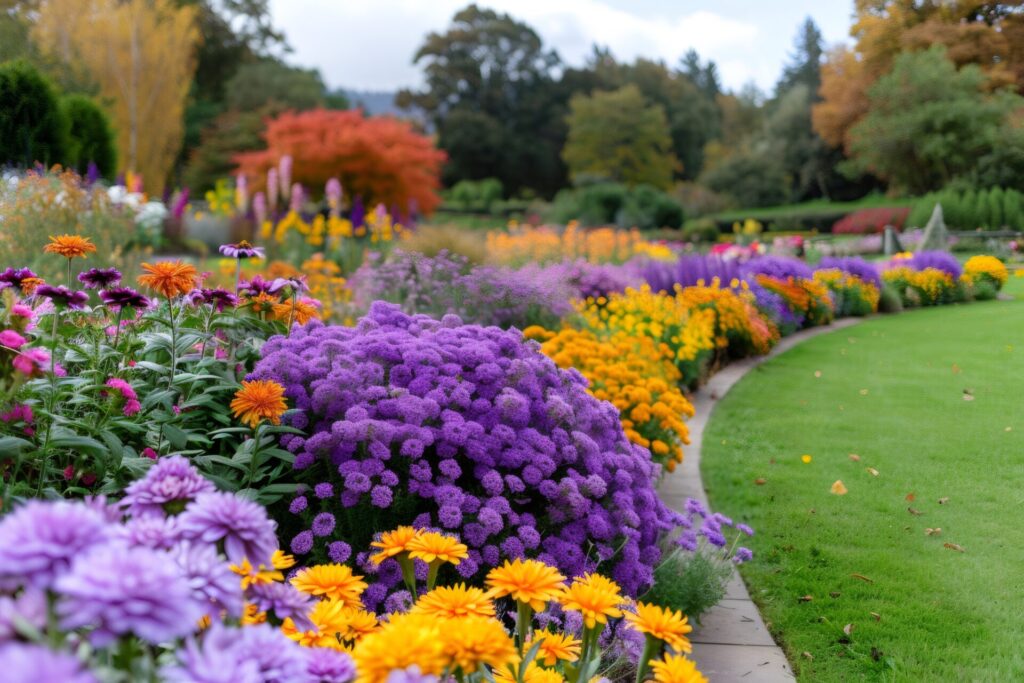As the gardening season winds down, fall offers a valuable opportunity to maintain your landscape and prepare for the months ahead. A strategic fall cleanup helps protect plant health, prevents overwintering pests, and improves conditions for spring growth.
In this article, we explain why fall cleanups matter and cover essential tasks, from removing garden debris to fertilizing trees.
What Are Fall Cleanups?
Fall cleanups refer to a set of essential gardening tasks performed at the end of the growing season. These typically include removing leaves, cutting back perennials, clearing annuals, and preparing soil for winter. Cleaning up garden beds at this stage helps reduce fungal diseases, suppresses insects, and improves air and light flow across your yard.
The Importance of Garden Debris Removal
Fallen leaves may seem harmless, but allowing thick layers to sit on your lawn or garden beds can lead to problems. Wet, compacted leaves block sunlight, trap moisture, and encourage fungal growth. They can also harbor insect eggs and plant diseases over winter. Removing them reduces these risks and keeps your garden tidy and healthy.
How To Dispose of Garden Debris
Here are ways to manage leaves and garden waste effectively:
- Collect and bag fallen leaves using biodegradable yard waste bags for city pickup or drop-off at compost sites.
- Mulch in place by mowing over dry leaves to return nutrients to the soil and prevent lawn smothering.
- Layer and compost shredded leaves with grass clippings and food scraps to create nutrient-rich fertilizer.
- Skip burning leaves to preserve organic matter and prevent the release of harmful air pollutants.
Cutting Back Perennials in the Fall
Cutting back perennials helps improve air circulation, removes potential pest habitats, and prepares plants for dormancy. It also clears room for new spring growth. However, not every perennial needs cutting back. Some plants, such as ornamental grasses and those with seed heads that attract birds, can be left until spring for added winter interest.
When To Trim Perennials
Wait until after the first hard frost, when foliage has died back and the plant is fully dormant. Cutting too early may interfere with the plant’s natural energy-storing process. Perennials like daylilies, hostas, and peonies respond well to fall pruning. However, for varieties that bloom on old wood, like some types of hydrangea, trimming should be reserved for spring.
How To Cut Back Perennials
Follow these steps for effective pruning:
- Use clean, sharp garden shears or pruners to prevent the spread of disease.
- Cut stems back to 2–3 inches above the soil to protect crowns from frost.
- Discard any diseased or pest-infested material—never add it to compost, as it can spread pathogens and pests.
- Label or mark trimmed plants to make spring identification easier.
Fertilizing Trees via Root Injection
Fall is also an excellent time to feed trees using root injection. This method delivers liquid fertilizer directly into the root zone, where it can be absorbed quickly and efficiently. It supports root growth during dormancy, ensuring stronger foliage and flowering when spring arrives.
When To Apply Tree Fertilizers
The best time to fertilize trees is after they shed their leaves but before the soil freezes. At this point, the tree has entered dormancy and will utilize the stored nutrients to strengthen its root system rather than promote new growth. This supports healthier, faster canopy growth once spring begins.
Best Practices for Using Root Injection on Trees
Follow these tips when applying root injection to trees:
- Use a slow-release, balanced fertilizer formulated for trees to support root development.
- Inject the solution 8–12 inches deep in a grid pattern around the drip line, where roots actively absorb nutrients.
- Avoid applying fertilizer near the trunk—stay at least 12 inches away to prevent rot and root burn.
- Sanitize tools before and after use to minimize the risk of disease transmission.
- Water the area lightly after injection to help distribute the nutrients evenly throughout the soil.
- Consult a certified arborist when treating large or mature trees for proper diagnosis and care.
Partner With Well Rooted Gardens for Expert Fall Cleanups!
Well Rooted Gardens has helped Omaha homeowners maintain healthy landscapes since 2007. Our team handles everything — from debris cleanup to targeted tree care — so your yard is ready for the next season. We also offer full-service hardscape and softscape installations to enhance both function and beauty in your outdoor spaces year-round.
Call 402-800-7389 or contact us to schedule your fall cleanup today!

